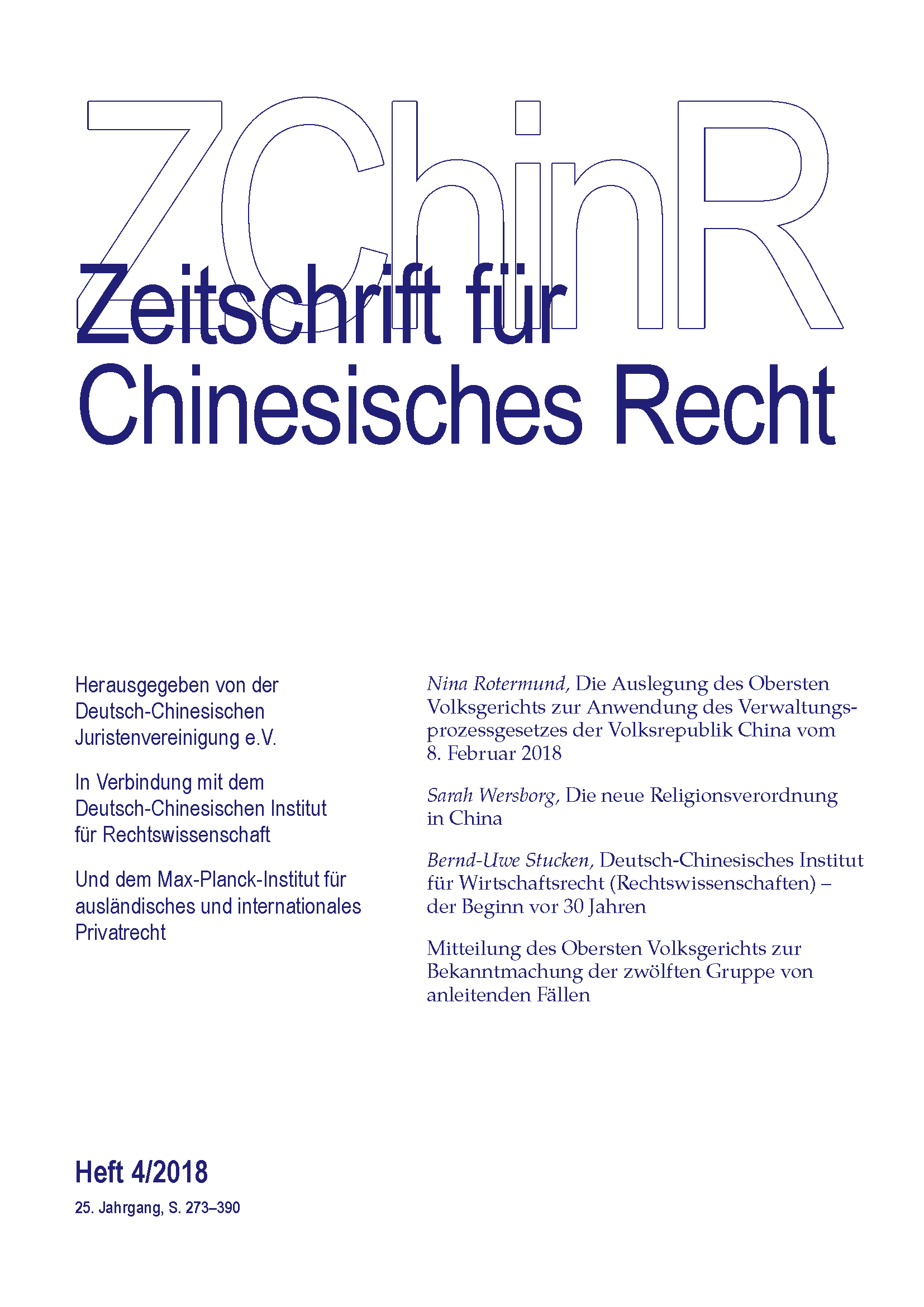The Chinese “Handbook of Legal Formalities”: Recommendations for Chinese Lawmakers and a Treasure-chest for the Sino-legal Researcher
DOI:
https://doi.org/10.71163/zchinr.2019.133-143Abstract
In 2009 and 2011, the Legislative Affairs Commission of the Standing Committee of the National People’s Congress published two related documents which demonstrate how earnestly it views the responsibility of legislators to enact reliable, clear and coherent laws in a unified legal terminology. The documents, titled “Technical Standards for Legislation” (Part 1 and Part 2), resemble to a certain degree Germany’s “Handbuch der Rechtsförmlichkeit” (the “Handbook of Legal Formalities”), a reference work which helps the legislature to draft laws in a precise manner. The Technical Standards for Legislation is unquestionably an eye-opener as regards phenomena which, though well-known to all who are concerned with the research of Chinese law, have so far remained unresolved. This concerns, for example, the formulation of obligations and prohibitions: Here, the Chinese legislature has now clearly stipulated that the term “yingdang” is to be used for legal obligations and “bu de” for prohibitions. Furthermore, the distinction made between the discretionary granting of administrative approval (“pizhun”) and the obligatory granting of administrative approval (“hezhun”) is of far reaching significance both for the understanding of Chinese administrative law and for practitioners. It is therefore remarkable that the Technical Standards for Legislation have been addressed by Chinese legal scholars only rarely and have not been applied in the interpretation of Chinese law. However, this might be explained by the fact that the Technical Standards for Legislation lack a legal basis.








